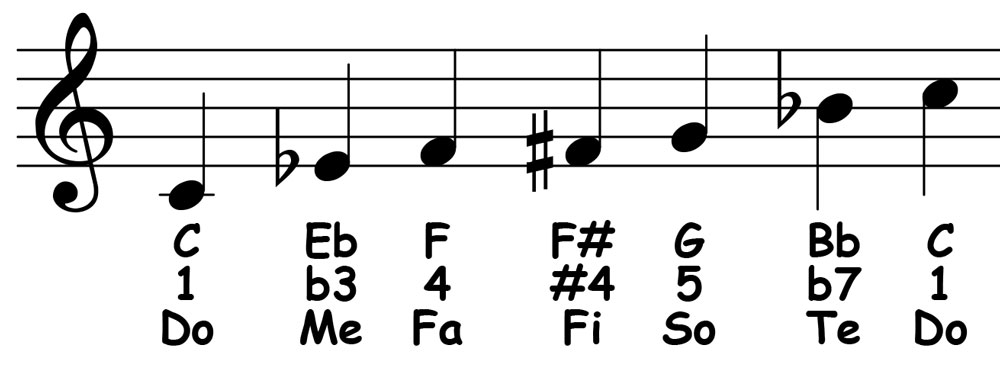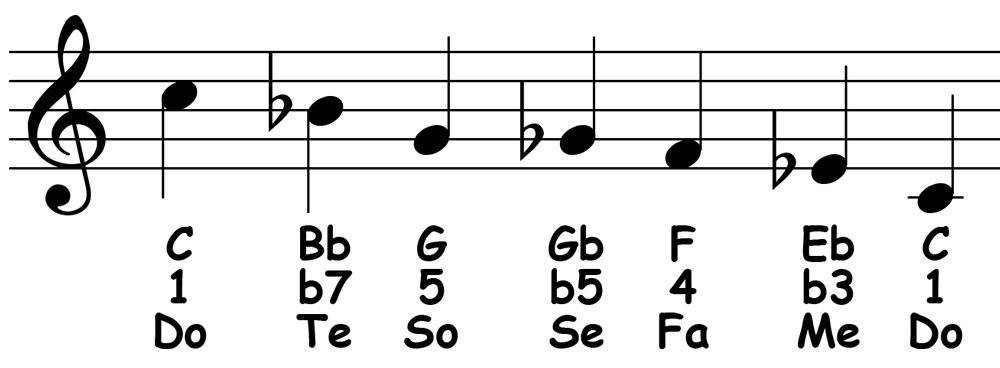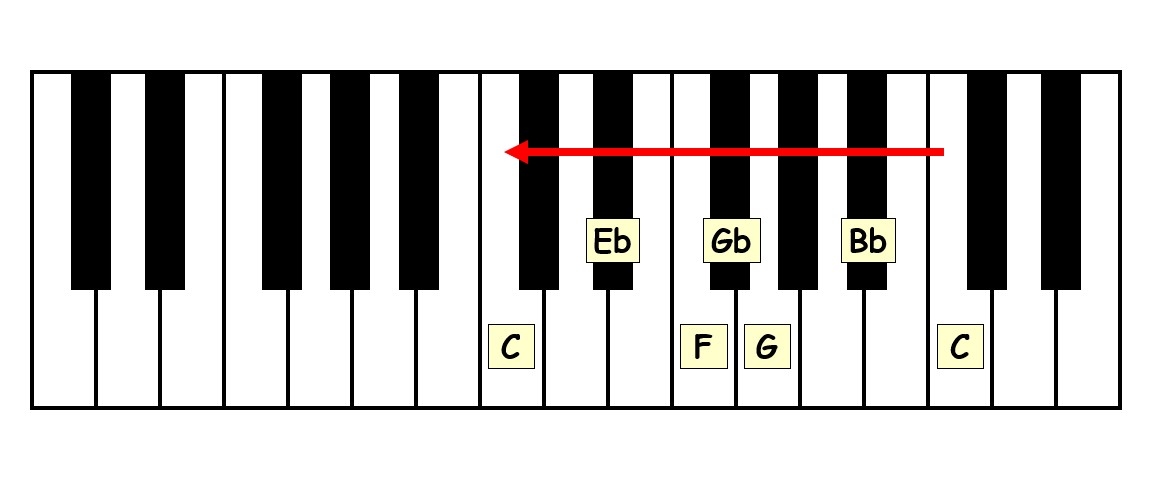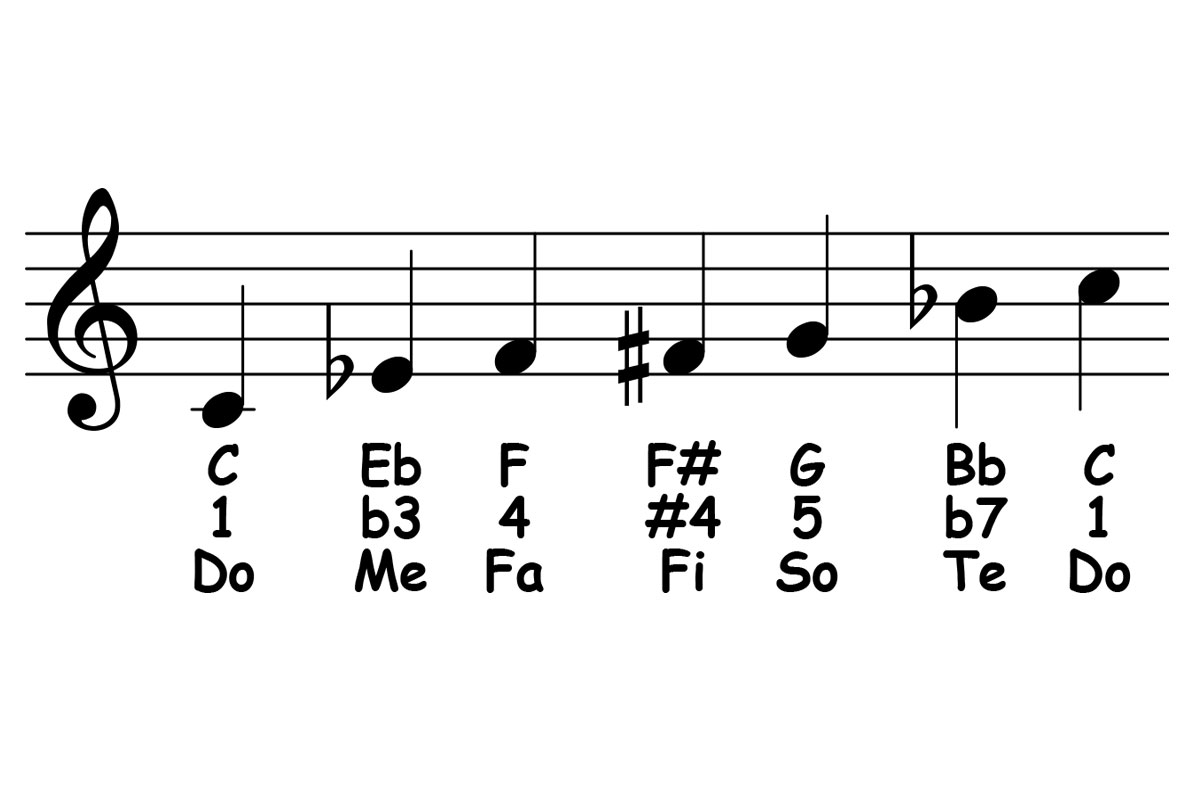The Minor Blues Scale is the blues scale that most people are familiar with…
The Minor Blues Scale has only six notes and is yet another existence proof that scales are not made up of “half steps” and “whole steps”.
C Minor Blues Scale Theory
The notes Me, Fi/Se, and Te are called blue notes, which create that delicious “bluesy” quality you immediately hear and feel!




- The scale structure of the Minor Blues Scale is 1-b3-4-#4/b5-5-6-b7-1. Always. No matter what key you are in.
- The Solfege syllables of the Minor Blues Scale are Do-Me-Fi/Se-So-Le-Do. Always. No matter what key you are in.
- The only thing that changes when you change keys are the letter names.
Don’t fuss over whether F#/Fi/Fa sharp should be called Gb/Se/So flat or vice versa. These are all just names that you will eventually abandon like training wheels. At the end of the day, the sound-feeling and physical mapping on your instrument are all that matter!
Comparative Scale Study
Notice that the Minor Blues Scale uses all five notes from the Minor Pentatonic Scale, but adds an extra blue note Fi/Se. Don’t try to “memorize” this fact, but do realize how much certain scale types have in common and how learning one kind of scale helps you to learn others.
Minor Blues Scale Solfege Ear Training
Reading, playing, and singing the Solfege Syllables out loud is an extremely effective way to tune up your ears and to internalize the unique sound-feeling of each note in the scale with respect to the key center Do. Make sure to do this slowly enough for the unique sound-feeling of each Solfege Syllable to make a meaningful impression on your mind’s ear.
C Minor Blues Scale: Linear, Ascending…

C Minor Blues Scale: Linear, Descending…

C Minor Blues Scale: Do-X-Do, Ascending…

C Minor Blues Scale: Do-X-Do, Descending…

Note: While it’s possible to continue by singing a bunch of other musical patterns, the 80-20 Principle teaches us that a more efficient approach is to get your ear training material directly from the music that YOU want to play!
learn more…
Major Blues Scale: Theory & Ear Training

Leave a Reply